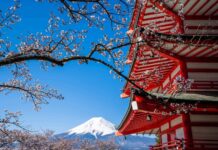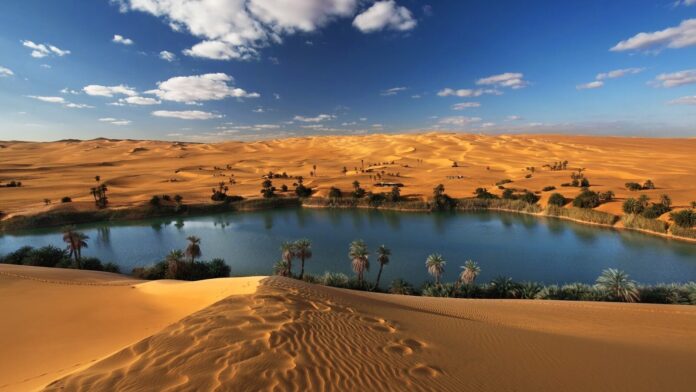
Egypt is the eastern gateway of Africa and a crossroads between the continents of the ancient world. The country is filled with hidden treasures, both historical and natural. Beyond its ancient monuments, Egypt boasts warm and sunny weather, breathtaking landscapes, stunning shorelines, and unparalleled natural beauty.
Al Fayyum
Al Fayyum, located in the western desert south of Cairo, is not considered a true oasis but is named after the Faiyum basin, which was formed by the Nile’s overflow. The area has been inhabited since the Neolithic period and hosts some of the oldest archaeological artifacts in the region.
Lake Moeris is part of the Fayyum oasis and was once a large freshwater lake that later became a salt lake. In the 12th dynasty, Ancient Egyptians redirected water flow with a dam and dug a supply canal, using the lake as their reservoir. This irrigation enabled them to grow crops of figs, grapes, and olives year-round. Boats were commonly found in the land-locked waters of Egypt and were used for fishing, trade, warfare, travel, and transporting massive stone blocks to build the great monuments of Egypt.
The most impressive pyramids of Ancient Egypt date back to the Old Kingdom and can be found in Giza, Saqqara, and Dahshour. However, one famous pyramid of the Middle Kingdom is located in the Fayyum. Pharaohs such as Amenmhat III chose the Fayyum as their final resting place, and his pyramid left a mark on antique chronicles. It was referred to as the Labyrinth due to the vast mortuary temple complex at the foot of the pyramid.
During the Ptolemaic era, the metropolis was named KroKodilopolis by the Greeks in honor of the crocodile god Sobek. The region’s main cult was that of Sobek of Shedet, associated with water and fertility, both very important to an area that depended on irrigation. During festivals, ancient Egyptians recited hymns to Sobek, and the Greeks adopted the local embalming mortuary rites, with beautifully painted sarcophagi adorned with amazingly realistic portraits.
Al Fayyum is a wonderful sightseeing destination, with attractions ranging from the Faiyum Waterfalls and the Village of Tunisia with its pottery, wooden antiques, and paintings, to its unique architectural designs. Check this collection of Egypt tour packages.
The White Desert
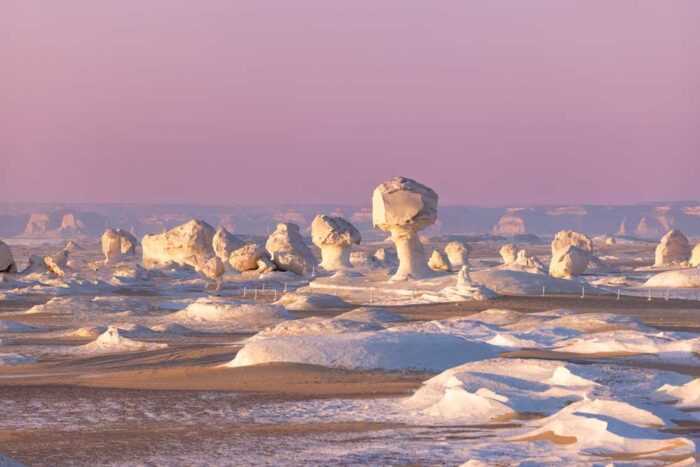
The White Desert in Egypt is a unique and stunning natural landscape that attracts both locals and tourists alike. Located in the Western Desert, the rocks in the White Desert formed over thirty million years ago during an ice age and then shaped by sandy storms over time. The white, chalk-like rocks create a surreal and otherworldly atmosphere that visitors find unforgettable.
To protect this natural wonder, the Egyptian government declared the White Desert a natural protectorate in 2002, prohibiting human development in the area. Camping is allowed only with the accompaniment of a local Bedouin guide, and visitors are encouraged to respect the natural structures and avoid damaging them.
The best time to visit the White Desert is during a full moon when the bright moonlight reflects off the white rocks, creating a stunning display. From different angles and in various lighting conditions, visitors can spot formations that resemble Sphinx, human faces, and even camels.
While camping in the White Desert may not be the most luxurious experience, with temperatures reaching 0 degrees at night and rough ground to sleep on, the magical experience of exploring the unique scenery at night makes it worthwhile. Visitors can climb smaller rocks for a better view or capture unforgettable memories with their cameras.
The Oases (Dhakhla- Kharga- Baharia- Siwa- Farafra)
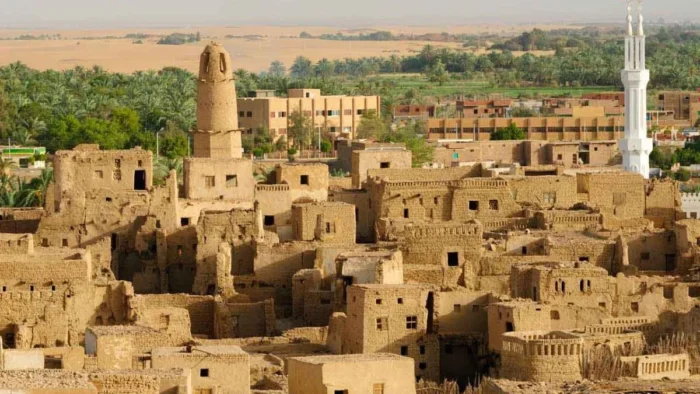
What are the five most touristically important oases in Egypt’s Western Desert, and what are some of their unique features and attractions?
Egypt boasts about seven oases in the Western Desert, of which five are the most touristically important. These are:
Dakhla Oasis: Located in the governorate of the New Valley, in between the oases of Farafra and Kharga, Dakhla Oasis is believed to have been settled permanently in the Holocene era. It is home to a wonderful human heritage ranging from the pharaonic period in the 6th dynasty, passing by the Roman sandstone temple of Deir el-Hagar, to the historically wonderful monument of Qasr ad-Dachla. The latter is a fortified Islamic town built by the Ayyubid kings, boasting buildings with up to four-story mud bricks containing blocks with Hieroglyphics. Another ancient monument that dates back to 924 CE is the three-story minaret 21 meters long. Dakhla Oasis also has groves of oranges, olives, and dates trees interspersing with the sand hills along highways, providing some of the most beautiful sightseeing in the Western Desert.
The Bahariya Oasis: This oasis, formed after the depression in the surface reached the water table and natural springs, is about 370km southwest of Cairo. It is home to hot springs that are perceived by many locals and visitors alike to have healing characteristics. It also offers direct access to the astonishing landscapes of the White Desert, a breathtaking landmark whose rocks are snow-white to creamy and chalk-like, formed as a result of sandstorms in the area. During the Roman Era, Bahariya Oasis was one of the greenest fields in Egypt, and large amounts of wheat and wine were shipped to the Nile Valley. A recent archeological find revealed nearly 10,000 mummies from this period in a necropolis.
El Kharga Oasis: The southernmost of Egypt’s five oases located in the Western Desert, Kharga Oasis is the largest oasis in the Libyan desert of Egypt. It is considered the most modernized among Egypt oases and is surrounded by extended thorn palm, buffalo thorn, acacia, and jujube growth in the oasis surrounding the advanced town of Kharga. For lovers of biodiversity, this region is home to many remnant wildlife species. It also boasts many archeological sites, such as the Temple of Hibis, which was constructed c. 500 BC, and the Christian cemetery of El Bagawat, regarded as one of the best-preserved and earliest Christian cemeteries in the Ancient World.
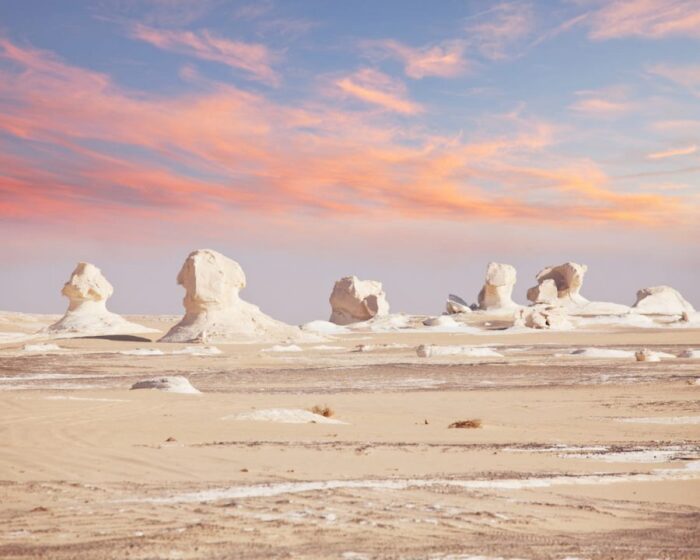
Farafra Oasis: With the smallest population and the second biggest by size, Farafra Oasis is midway between Bahariya and Dakhla oases. The town of Farafra is characterized by the traditional architecture of its quarters. Tourism has been encouraged by Farafra national culture and traditional methods of building and carrying out restorations. Visitors may enjoy the hot springs at BirSitta and the natural view of El-Mufidlake. Twenty-eight miles to the north of Farafra is the White Desert National Park, a unique tourist-like attraction with immediate access from Farafra. The White Desert’s rocks are snow-white to creamy and chalk-like, formed as a result of sandstorms in the area. Magnifique camping trips, particularly during full-moon nights, are an unforgettable experience and do not fade away memory.
Siwa Oasis: The most isolated urban oasis in the Western Desert, Siwa Oasis is about 19 meters under sea level. It derives its fame from being the home to an oracle of Ammon, which gave it its ancient name of Ammun Ra.
We highly recommend checking TripsInEgypt.com is a local Egypt travel agency located in Cairo that aims to provide all the safest types of Egypt day tours, Egypt vacation packages, and Nile river cruises with local tour guides, high luxury accommodations, and transportation to make every traveler enjoy a vacation at the heart.
The company offers a range of tours and travel packges for visitors to Egypt. They provide customizable itineraries, with options to visit popular attractions such as the Pyramids of Giza, the Egyptian Museum, and the Nile River. It also offers specialized tours, such as desert safaris, snorkeling excursions, and natural immersion experiences. Their experienced guides and customer service team ensure a comfortable and memorable trip for all travelers.


